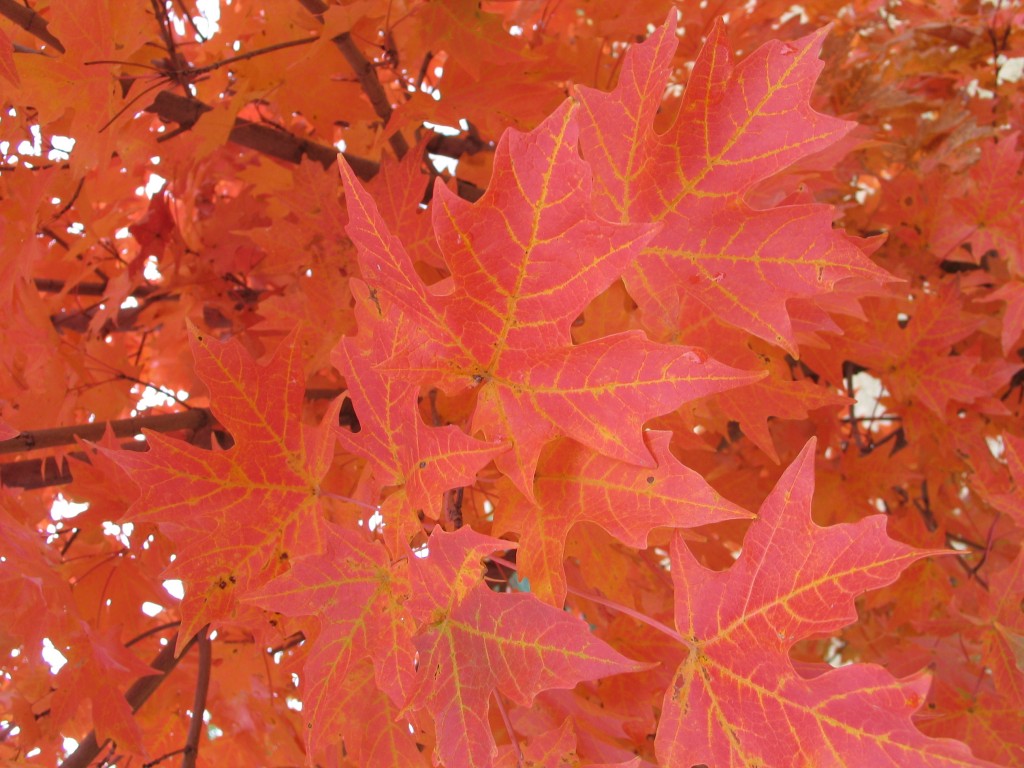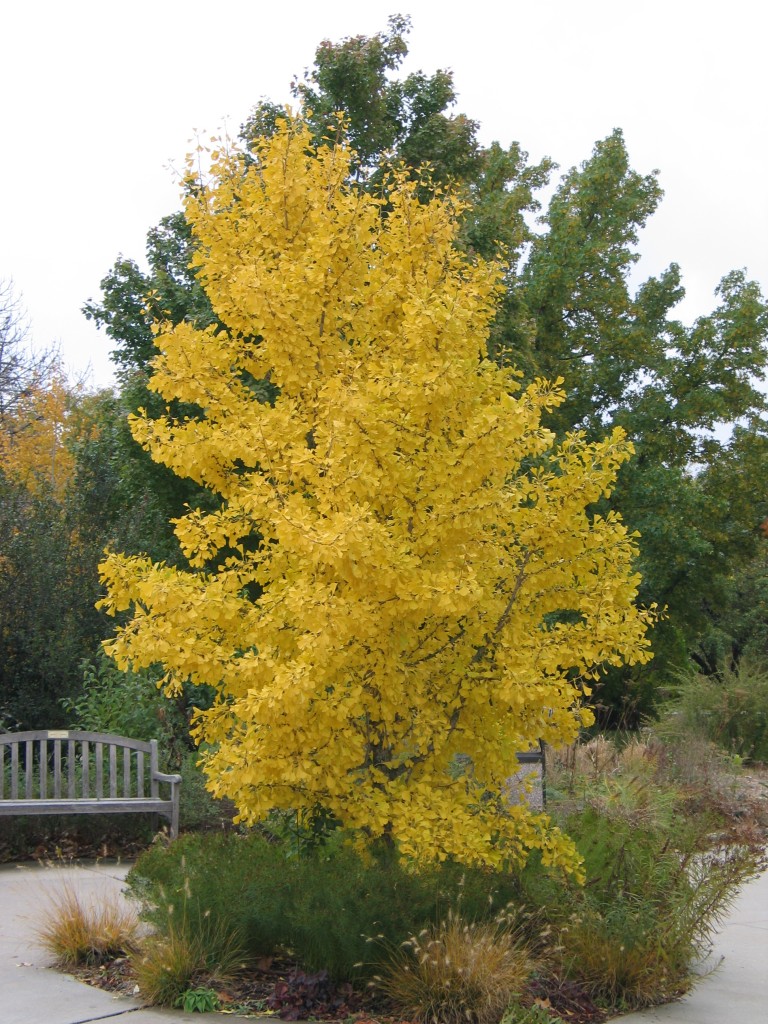The other day I was driving through town and really noticed the changing leaves for the first time this fall. They are looking particularly colorful this year. The Maple tree varieties like ‘John Pair’, ‘Autumn Splendor’, ‘Table Rock’ and Oaks like Red Oak and Shingle Oak put on quite a show. My favorite tree at the arboretum is the Sugar Maple called ‘Table Rock’. It has consistent orange-red fall color.
These leaves, no matter how beautiful, will eventually fall. Then we need to decide what to do with them. Here at the arboretum we compost them. Leaf compost makes excellent plant food and humus that can be incorporated into your garden or flower bed. Leaf compost is high in valuable minerals such as nitrogen, phosphorus, magnesium, calcium and other trace elements. Analysis shows that leaves from most trees can contain up to twice as many minerals as aged manure.
Why wouldn’t you want to make your own compost from leaves? Good compost developed from leaves also adds organic matter to the soil. This organic matter is great for aerating heavy clay soils or increasing water holding in sandy soils. Take advantage of these free gifts.
Steps for composting leaves:
- Collect leaves. Shred them into small pieces to speed decomposition. Place leaves on the ground, which will make it easier to turn them and allow beneficial organisms such as worms to infiltrate the pile.
- To start your compost pile, your first layer should be several inches of leaves on the bare ground. This helps aerate the entire pile.
- Layer with alternating green (nitrogen rich) and brown (carbon rich) material. Green material can be grass clippings, food scraps, algae, tea bags or any nitrogen source. These green ingredients speed the decomposition of the brown material. Brown material can be leaves, newspaper, cardboard, sawdust, or straw. These ingredients are generally slow to decompose and clump together. They need time and moisture for optimum breakdown. As a general rule, try to have one-third green and two-thirds brown. The secret to a healthy compost pile is to maintain a working balance between these two elements. Too much green makes a smelly, anaerobic mess. More brown is better than too much green.
- Keep pile moist by either manually watering or allowing rain to infiltrate compost, but don’t go overboard.
- Turn the pile every few weeks. This incorporates and mixes all the elements together while aerating the pile. If the pile is never turned, oxygen, which is an essential component in the process of decomposition, will be excluded. Allow the compost pile to reach an internal temperature of 140-160 degrees to kill weed seeds. If your compost pile is not reaching these temperatures, add more green material.
- In 4-6 months (next spring) the composting process will be complete.
If you don’t have need of fresh compost, the arboretum is willing to take your bagged leaves. We are again filling our leaf house with our leaves, but we can take more. Just drop your bags of leaves in the bus parking area at the arboretum. We will take them back to the leaf house. The leaf house is a great example of decomposition in action.



